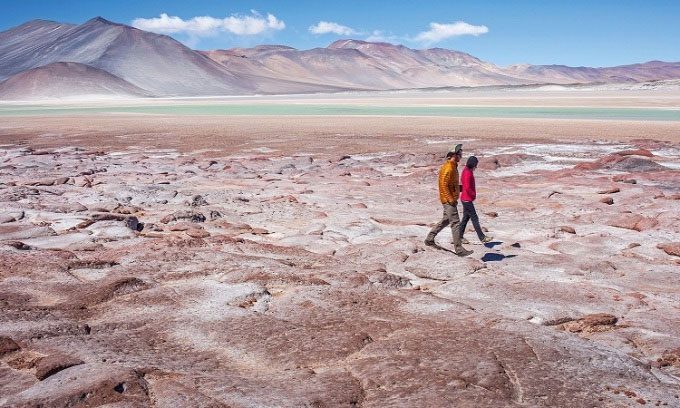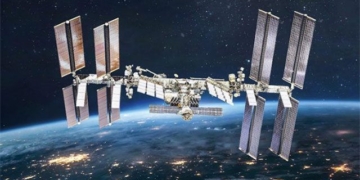Deserts become arid due to various factors such as location, atmospheric circulation patterns, and the interaction between wind and terrain.
Deserts come in many forms, including sand dunes, rocky canyons, shrub steppes, and polar ice fields. However, they all share one common trait: low rainfall. Any area receiving less than 25 cm of rain per year is considered a desert, according to Lynn Fenstermaker, an ecologist at the Desert Research Institute in Reno, Nevada. Of course, low rainfall means that deserts are very dry. But why are deserts so dry?

The Atacama Desert in Chile is one of the driest places on Earth. (Photo: National Geographic).
Fenstermaker states that global atmospheric circulation patterns are a significant reason. Solar energy reaches the Earth most directly at the equator, heating the air and evaporating moisture. The warm, dry air rises and moves toward the poles. It tends to sink again at about 30 degrees latitude. This circulation pattern is known as the Hadley Cell, which drives trade winds. This is why many of the world’s largest deserts, such as the Sahara and Gobi in the Northern Hemisphere and the Kalahari in the Southern Hemisphere, are located around these latitudes.
However, the process is more complex than that. Wind patterns interact with the terrain, affecting the location of deserts. For instance, air from the ocean that flows over and is blocked by a mountain range releases moisture as rain or snow on one side of the mountain. But when it crosses over the mountain and descends on the other side, the air is very dry. For example, in California, the Mojave Desert lies next to the Sierra Nevada mountain range.
Sometimes, inland areas are drier because they are too far from large bodies of water, to the extent that the air blowing through loses all its moisture along the way, according to Andreas Prein, a scientist at the National Center for Atmospheric Research in Boulder, Colorado. This is the case for the Gobi Desert in Central Asia, which is blocked by the Himalayas. Conversely, coastal areas are not always humid. Cold ocean currents interacting with the air moving inland can create fog. When that fog travels inland, the moisture remains in the air instead of falling as rain. This can create deserts adjacent to oceans, such as the Atacama in Chile, one of the driest places on Earth.
Not all deserts are hot. Many areas in the Arctic and Antarctic are also considered deserts. Cold air cannot hold as much moisture as warm air, according to Prein. Therefore, the frigid temperatures in polar regions lead to very little rainfall, even though there is considerable water stored underground in the form of ice.
As global climate patterns change, deserts also shift. For example, thousands of years ago, grasslands and tropical forests covered the Sahara. Today, climate change is altering the boundaries of deserts across the planet. Prein notes that the Hadley Cell will shift north and south, expanding the areas where deserts form.
Warmer temperatures also drive changes through increased evaporation, making the air drier.
Human impact also contributes to desert expansion. Deforestation for agriculture leads to the loss of native vegetation. Some studies show that deforestation in tropical regions reduces rainfall. If more water evaporates instead of being retained in the soil by plants, the landscape will become increasingly arid.





















































